The mention of paradise often conjures images of Maldivian atolls surrounded by idyllic turquoise resplendence. Private islands, overwater bungalows, personal waiters and world class underwater experiences add context to such mental images, prominent in the minds of most paradise-seeking travellers. One could be forgiven for assuming, though, that sampling a piece of paradise appropriates exclusivity: prices are high – often exceeding several thousand dollars a night - and generally surpass the confines of a meagre backpacker budget. However, it is possible to visit the Maldives on a solo-backpacker budget.
Despite a significant disproportion between wealthy and less financially-equipped visitors, the Maldives are not off limits to the latter. With local islands, affordable speed boat transportation and day-passes to resort islands, visiting the Maldives can become your next travel reality.
If it happened for me, then you too can make it work.
The Possibility Exists: Backpackers in Paradise
For most, the key drawcard in visiting the Maldives is being served up a slice of paradise, in luxurious surroundings. Despite the appeal of this perfect picture, the Maldives offer much more: staying on a local island (of which there are several) provides an opportunity to tone down the opalescence and uncover a warm and charismatic local culture.

Even without the glistening exterior of resort islands, places such as Hulhumale, Villigili, Himmafushi and Maafushi still show beauty, seen – in part - in their inhabitants. On said islands, there are opportunities to mix – to a greater extent – with locals and observe their way of life.
Still complete with paradise-like necessities – white-sandy beaches, turquoise water and vibrant schools of fish, you will not feel as though you’re ‘missing out’. In fact, what these islands lack in overwater bungalows and exorbitance, they make up for in genuine cross-cultural encounters, raw rustic appeal and appetising local cuisine.
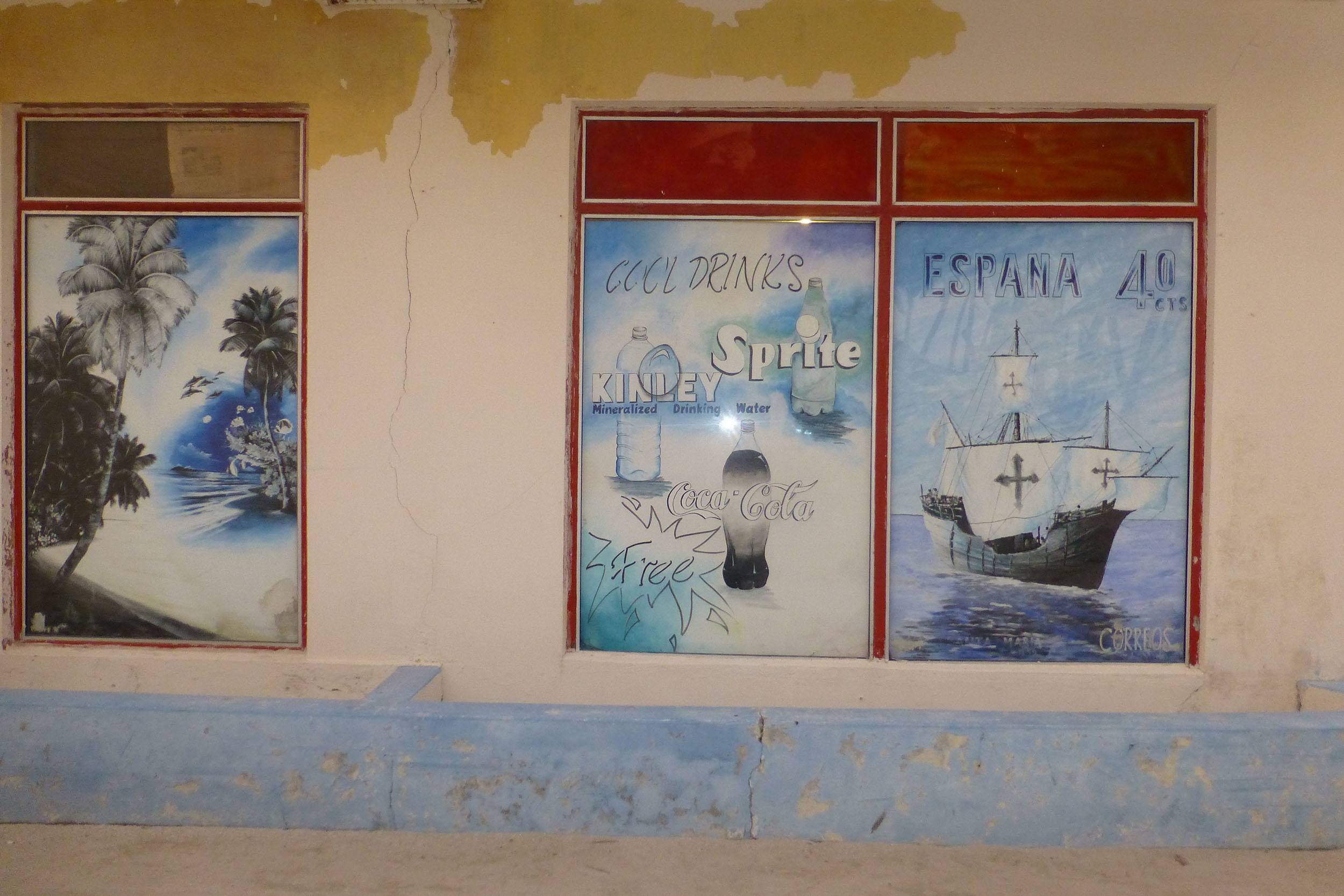
Most importantly, staying on a local island – found scattered throughout the country’s various atolls – is inexpensive.
I stayed on Maafushi and paid significantly less on accommodation than the price tag advertised by surrounding resort islands.
Although this may not be everyone’s idea of a textbook-perfect Maldivian escape, there are obvious advantages that need considering.
I had always wanted to visit the Maldives and wasn’t so arrogant to assume I’d ever succeed in doing so unless I compromised on something. And although a compromise in one regard, I certainly didn’t lose anything by staying on Maafushi. In fact, I was enriched by the experience.
Where to Stay and What to Expect: Local Island Options
Although there may be a lack of extravagance, most local islands are host to above adequate low-priced hotels (suitable to limited budgets). Often classified as resorts, these lodgings are analogous to Western-style hotels. Decorated tastefully and traditionally, they provide all necessary modern amenities and are usually conveniently located a few steps from the shores of the Indian Ocean.
White Shell Beach Inn on Maafushi demonstrates what you can expect to experience. Located a few metres from the water’s edge, I was seconds away from blissful immersion every morning and was cradled to sleep by the rhythmic sound of crashing waves each night.
There were several other hotels nearby, equipped in like manner.

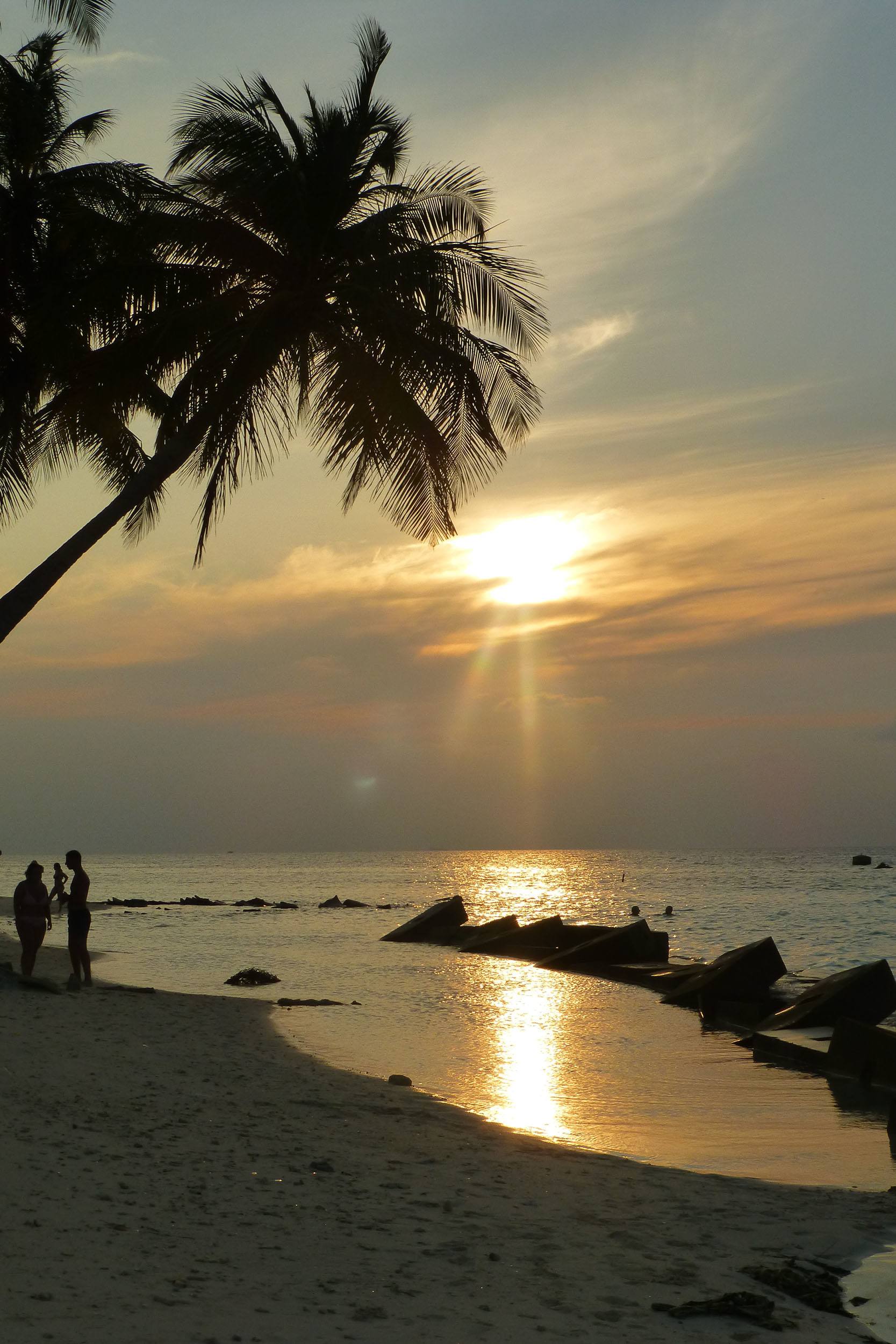
Save this article for future reference!
Regarding food, each hotel was home to a small restaurant, many of which served freshly sourced produce. Maafushi also contains a small supermarket - a godsend in times of want.
But if you tire of eating delicious fresh fish at the hotel’s restaurant, venturing to the neighbouring facility and sampling the competition’s fare is perfectly acceptable. After all, money spent serves to boost the local economy and supports employment growth. Flexible dining also provides an opportunity to meet new people – both foreign and local – to broaden cultural horizons.
Resort Island Voyeurism
The ferry ride from Male (the Maldivian capital) to Maafushi was peppered with beautiful sights. As we passed islands, the opulence of the country’s legendary appeal materialised: balmy bungalows jutted into the ocean - blooming out from each island - in perfect uniformity. Perched above turquoise waters, their impeccable arrangement – uniquely configured near each island – gave an impression of perfect symbiosis between architecture and nature.
Although content with my decision to stay on Maafushi, the desire to visit a perfectly-bedecked resort island burgeoned within. After all, pretension aside, these islands are why the Maldives have captured the world’s attention.
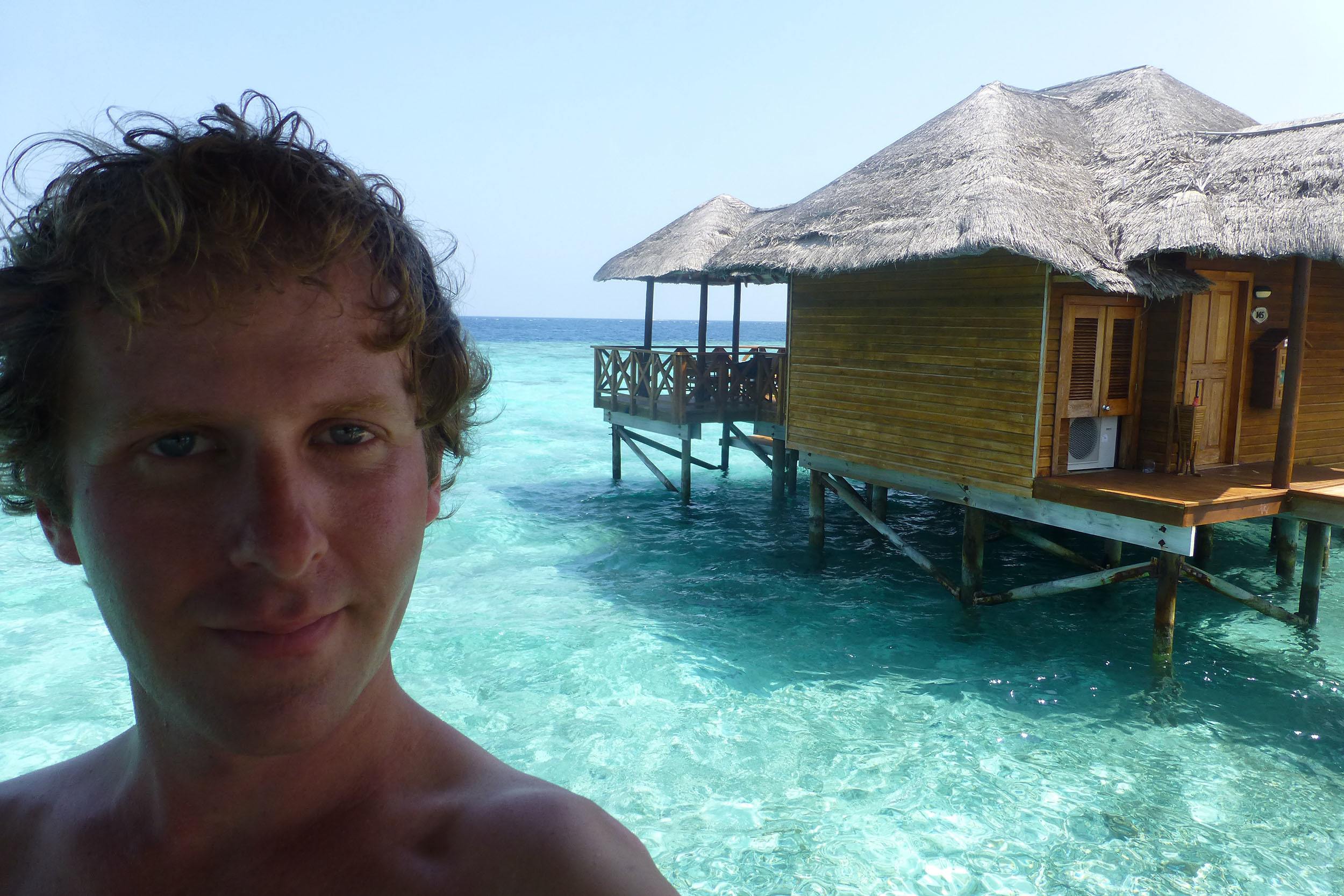

The good news is that visiting a resort island, with restrictions, is possible; it’s easier to achieve than you may think.
From Maafushi, there are several choices, all available with various options. Day trips can be arranged by hotel staff and each hotel has access to a private speed boat. Of course, the excursion comes at a cost but it’s much less exorbitant (often lower than US$50) than paying to stay at the resort.
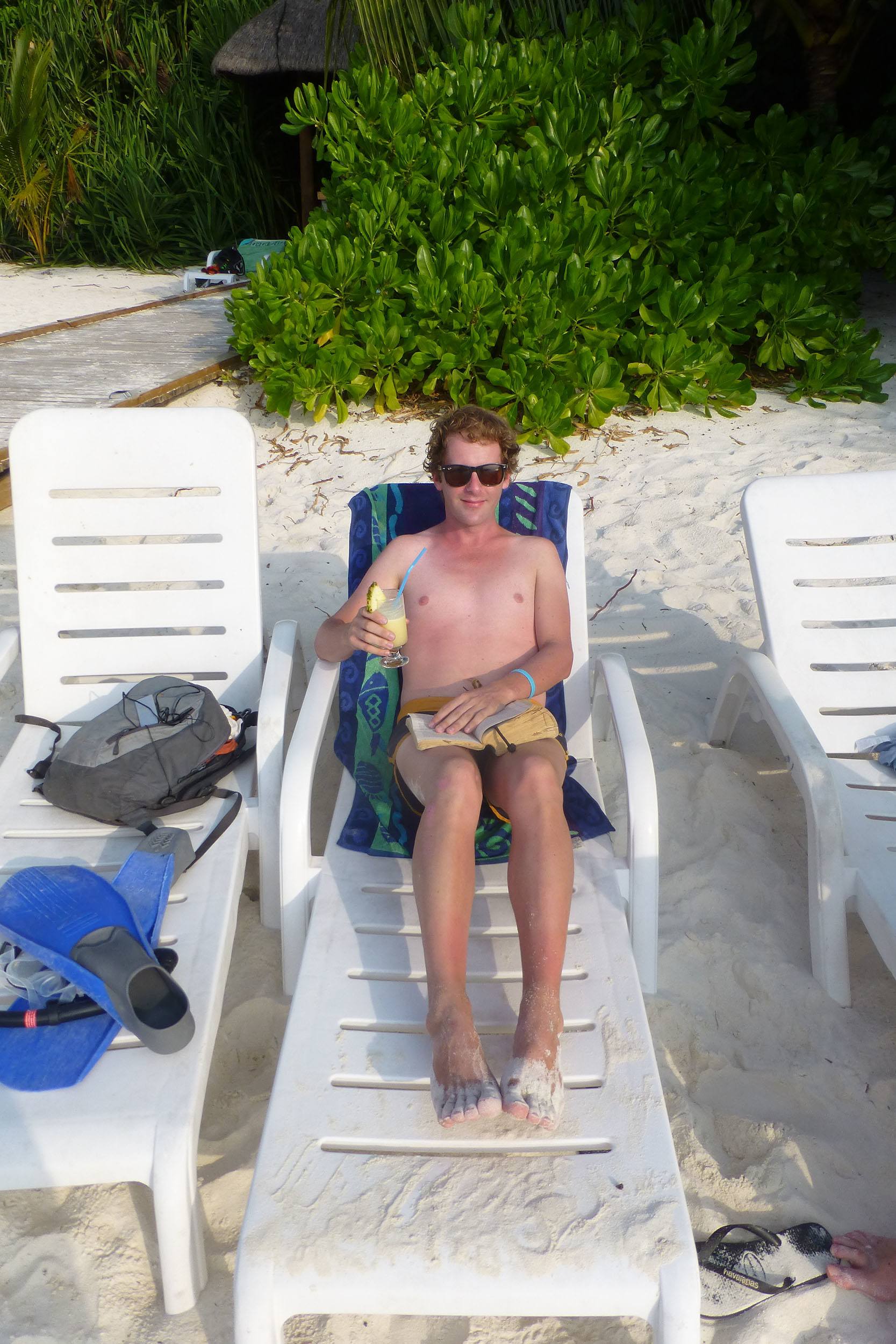
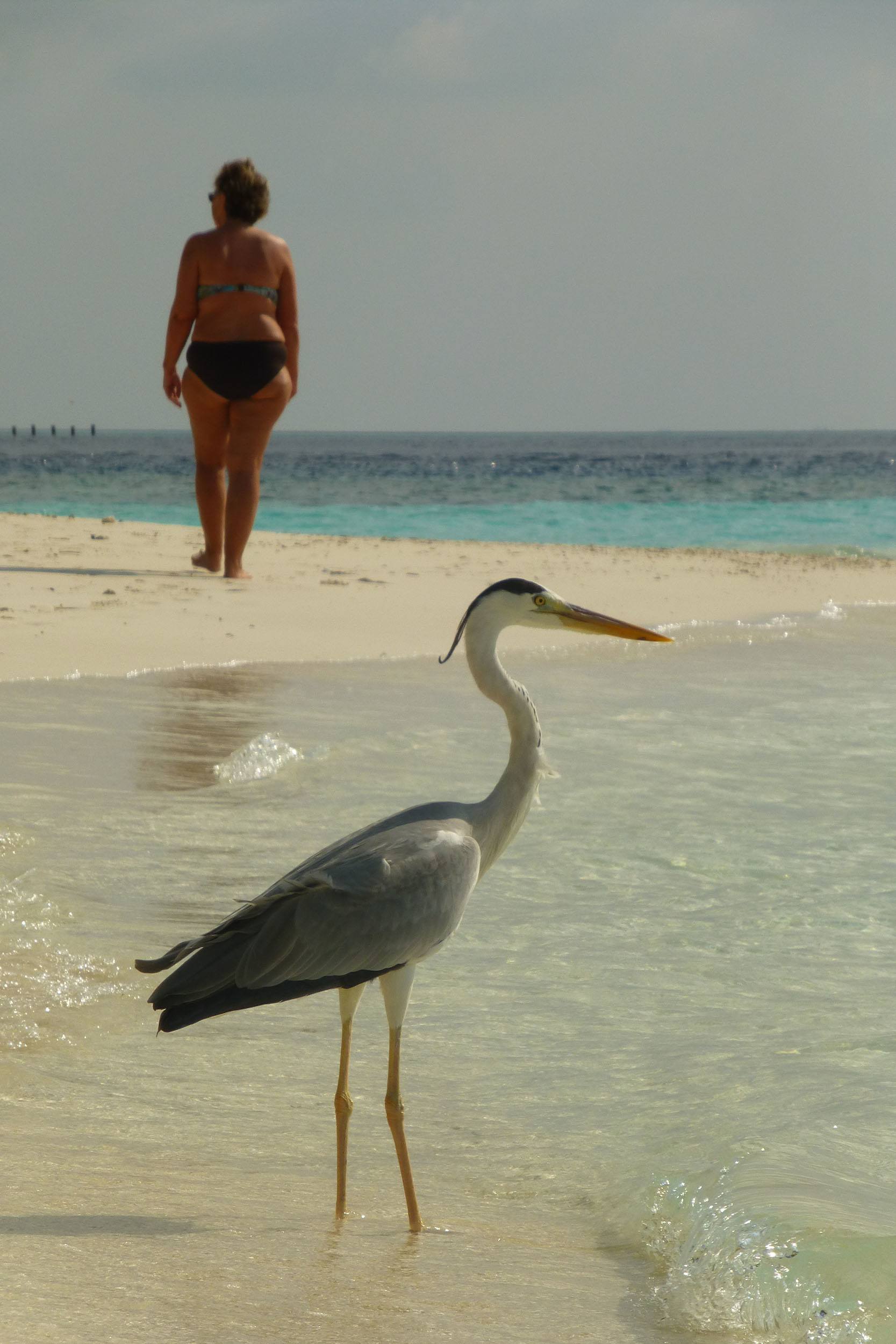
From Maafushi, I took two daytrips: the first was to Fihalhohi; and the second, to Biyadhoo (an island without overwater bungalows).
On each occasion, I had to pay for the boat transfer, entry onto the island (including the use of the beach and facilities) and lunch. Other items, such as requisite beachside piña coladas, were available for individual purchase.
Resorts operate in diverse ways. Some open a tab for day-trippers and require payment upon departure, whereas others charge an entry fee and payment is made on purchase of separate items. Regardless, this is made clear at the outset.
Ensure US dollars are available, as Visa and MasterCard are not always accepted.
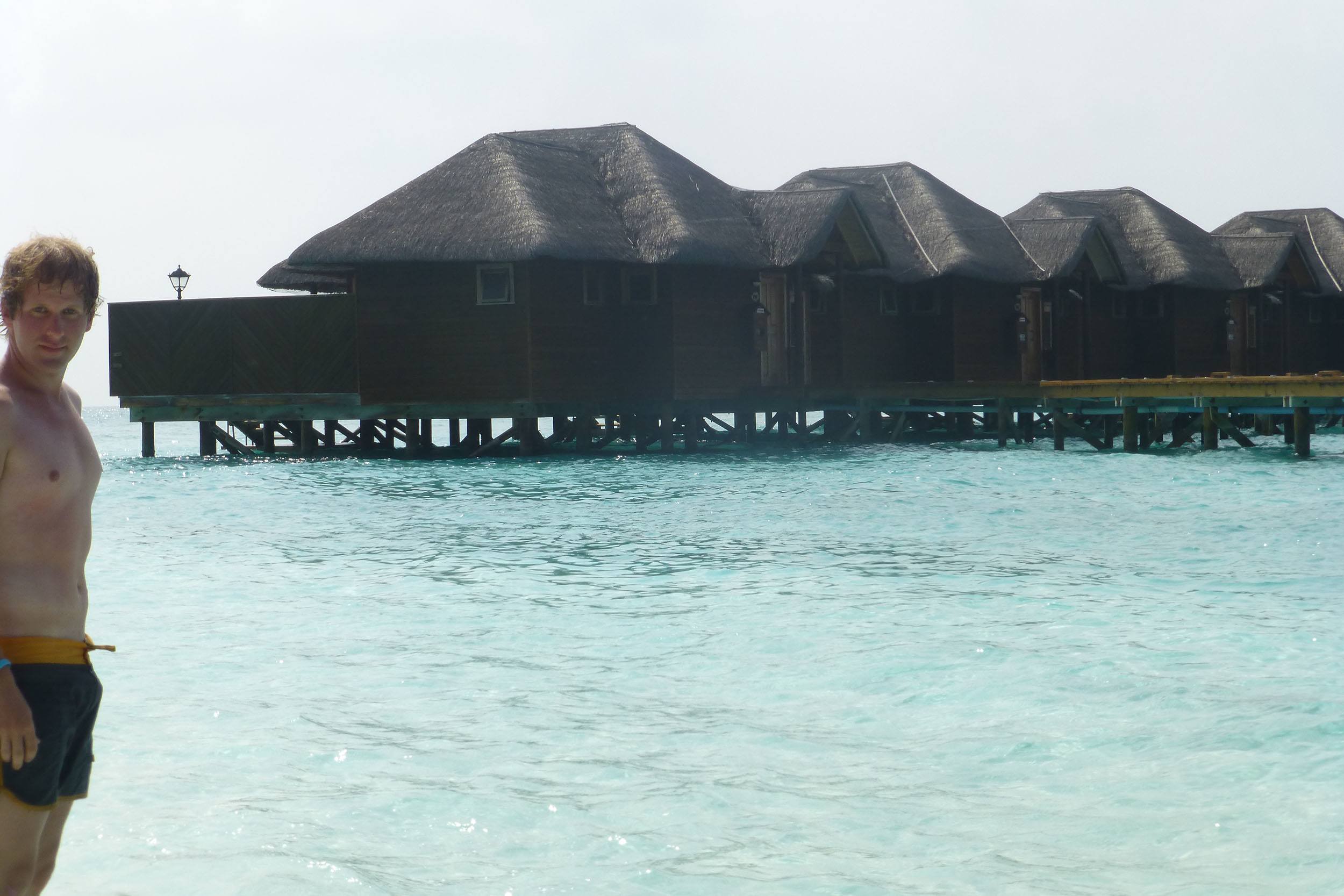
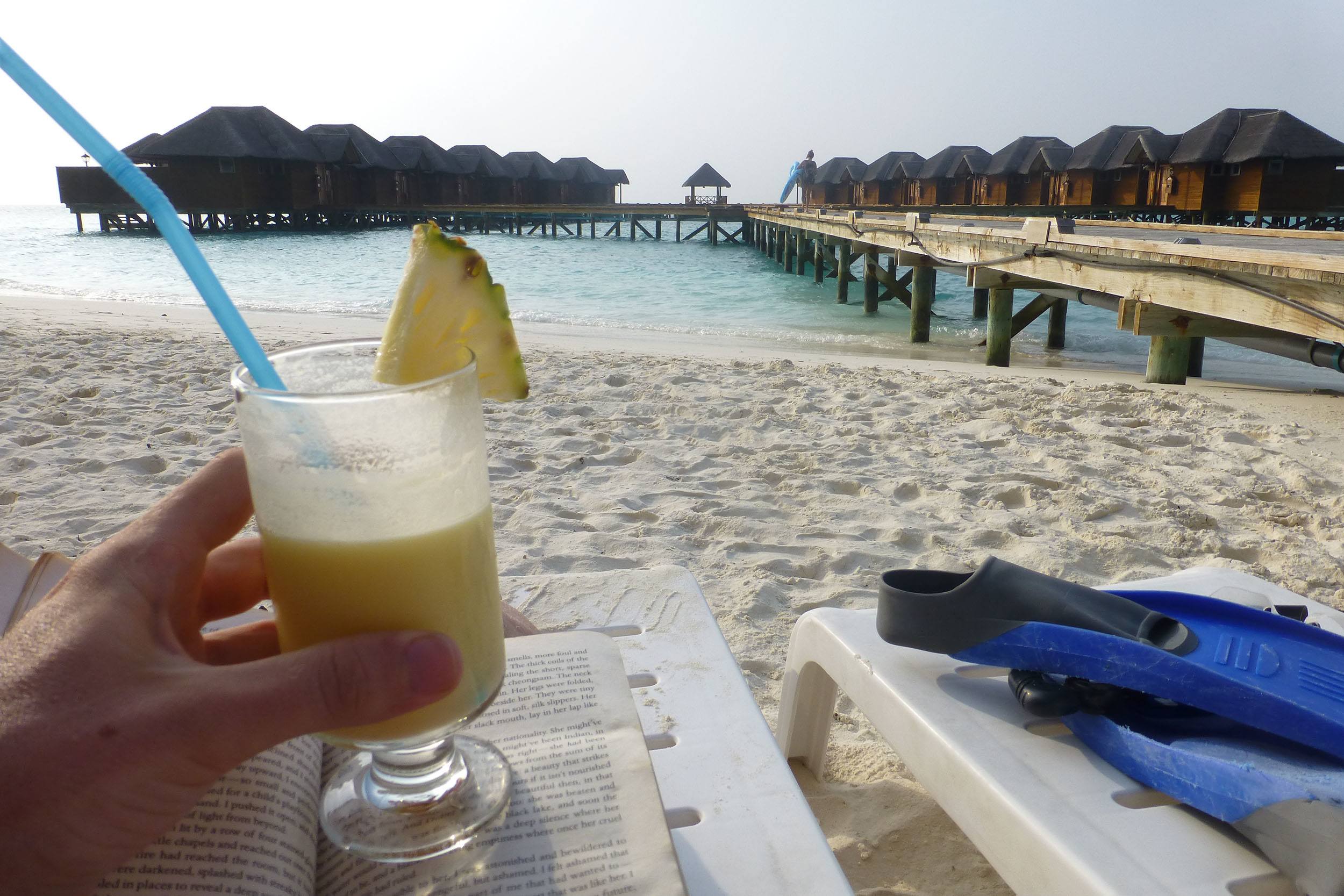
Despite a curt greeting from reception upon arrival at Fihalhohi – delivered pretentiously, the trip was worthwhile. Walking toward the bungalows, along the boardwalk above transparent waters, invoked a sense of bliss (regardless of contemptuous stares from [wealthy?] foreign tourists).
If paradise had been lost, then I’d found it.
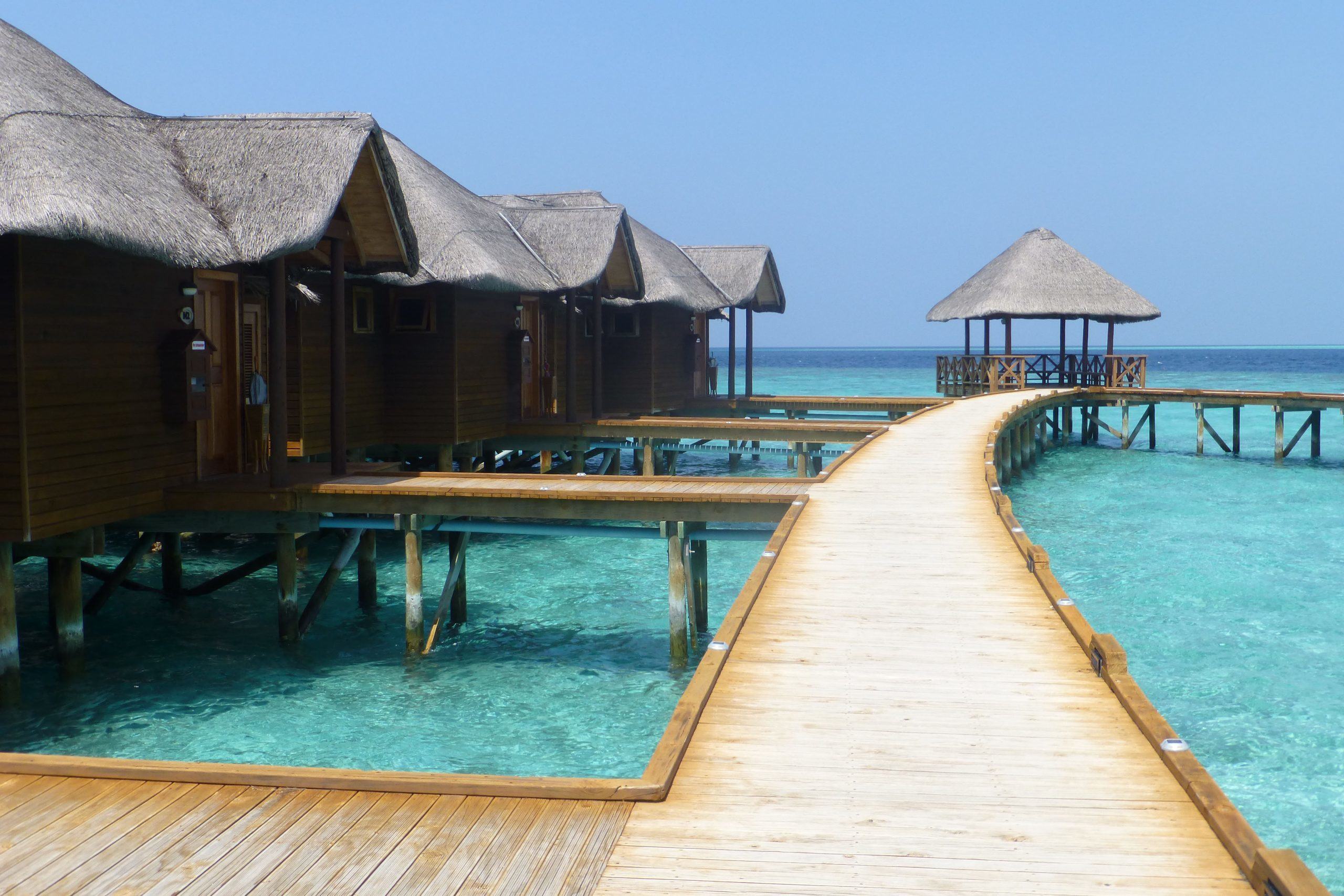
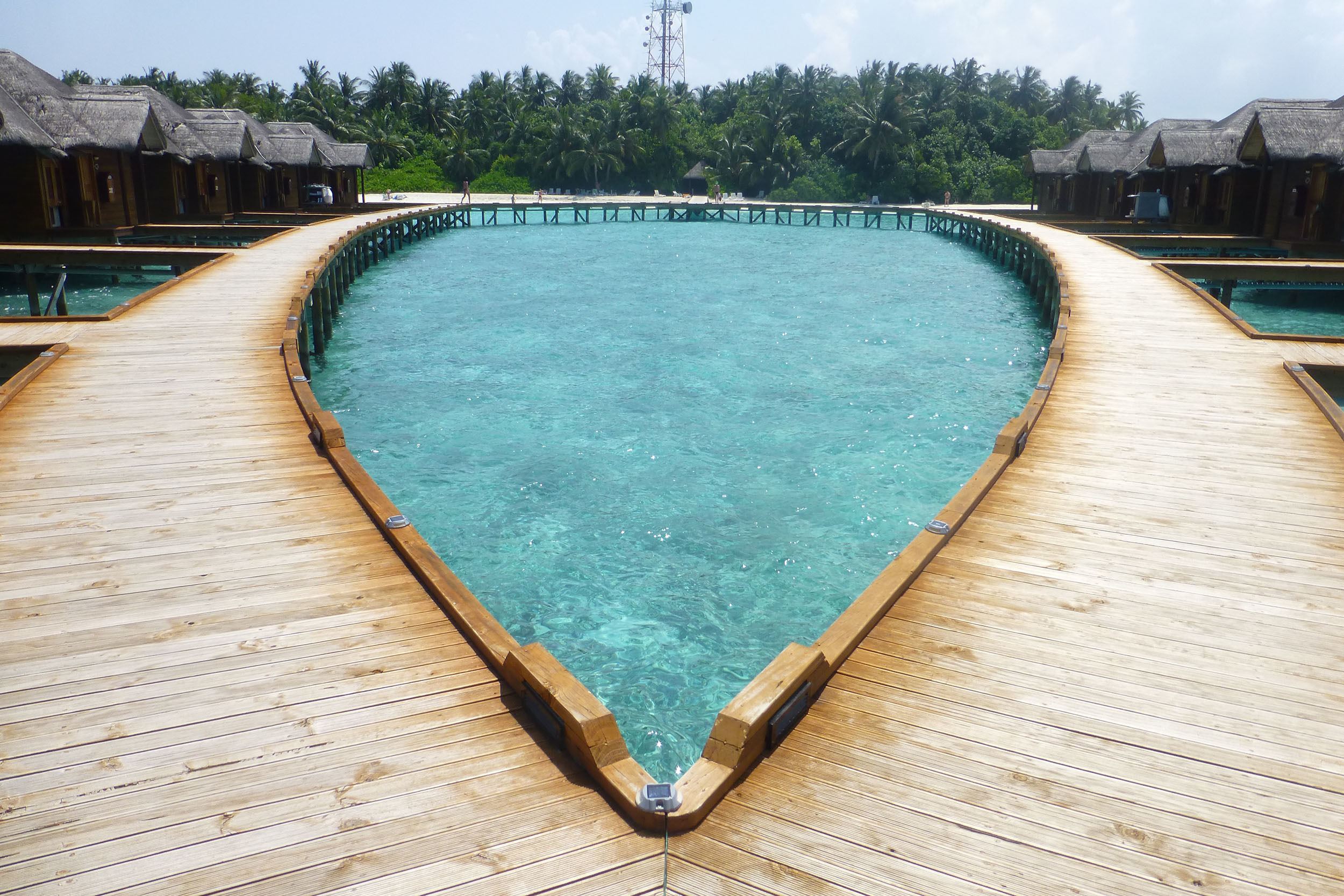
Save this article for future reference!
The design represents a stroke of genius and the way they’ve been constructed is nothing short of perfect. The designers have identified one of Mother Nature’s finer elements and taken advantage of her beauty, flaunting it luxuriously through an architectural chef d’oeuvre.
It is mental imagery needed to invoke a smile on inclement rainy days when island living is but a distant memory.
Be sure to go snorkelling: the vivid colours among the schools of fish and coral are impressive.
Getting to and around The Maldives
Fortunately, one of the twenty-first century’s most prominent airlines has made the Maldivian Capital of Male a regular stop on some frequently used flight paths. Some Emirates flights between Australia and the United Kingdom stop in Male – a perfect excuse for an extended stopover.
However, if traveling elsewhere, such as in Sri Lanka (which was the case for me), then flying cheaply to Male from Colombo is a distinct possibility. It takes only an hour and twenty minutes and – if booked at the right time – can cost you much less than US$200.
Other airlines frequenting the fabulous Indian Ocean gem include Etihad, Bangkok Airways, Singapore Airlines, SilkAir and Cathay Pacific among others.
Research the links at the bottom of the page for up-to-date and accurate information.
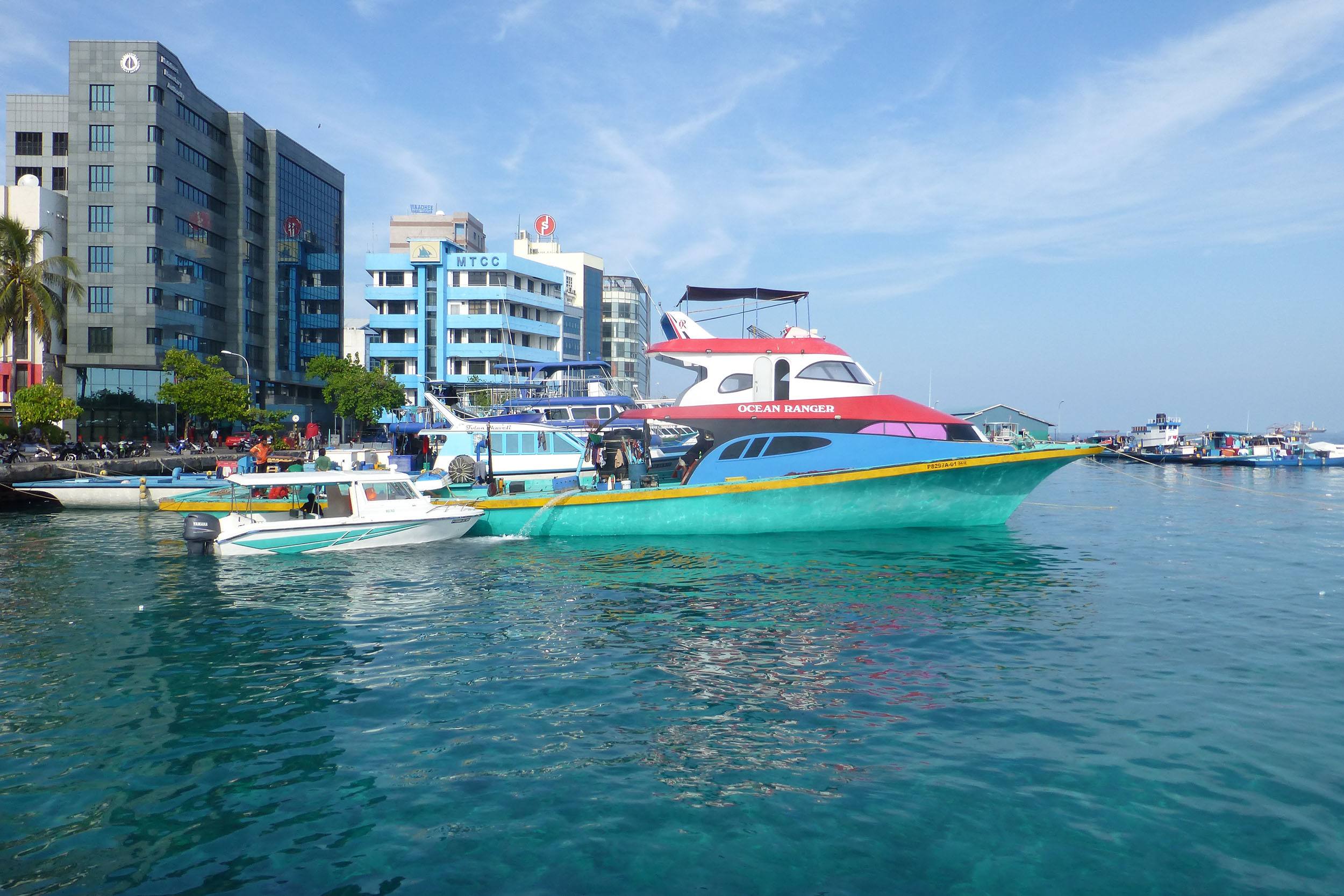

As for getting around the Maldives, there are three key water-based options: the quintessentially Arab Dhoni; public ferries; and speedboats. For explicit details about each, see Lonely Planet’s page on the subject.
For budget travellers, utilising the inexpensive but slow ferry is going to be the most appropriate option. But it comes with limitations. Patience is required: they are scheduled; they only visit inhabited islands; and they're susceptible to fluctuations in inclement weather.
Considering these factors, if you have time and patience, then getting around the Maldives on a budget is feasible.
I was based solely on Maafushi, so taking the ferry from Male was reasonably trouble-free. The ferry – on this particular route - departs daily except Fridays and is fundamentally utilised by locals mobilising between the two islands. It departs from the ferry terminal in Male and takes approximately ninety minutes to get to the final destination: paradise. I was surrounded by a few other intrepid travellers but mostly Maldivian natives (Dhivehis) which gave the journey a local charm.


On the return leg of the journey, I was unable to take the ferry and had to pay relatively high prices for a ride in the hotel’s speed boat. Now, I enjoy an adrenaline rush but gaining four metres of air – perched precariously inside a tin capsule - while attempting to navigate enormous and turbulent Indian Ocean waves invoked a sense of fear I’d never previously experienced. It certainly did not match my personal ideals underpinning ‘fun’ and ‘adventure’.
Needless to say, once outside the security of reef, boats – especially small ones – are susceptible to the brute force of Mother Nature. Therefore, it’s wise to consider the skies: if – on your day of departure – it is brimming with angry black clouds about to spill their fury on the earth below, consider staying another day in paradise. Permanent residence on the ocean floor, although surrounded by paradisiac conditions, is not the Maldivian epitome of luxury.
Is the Compromise Worthwhile?
Obtaining my very own glimpse of local island paradise, even with the glitz and glamour of resort island living nearby, was worth every dollar. By staying on a local island, not only did I have regular access to neighbouring resort islands, I was also given the opportunity to see Maldivian life at face value.
What I lost in glitz, I gained in cultural reward.
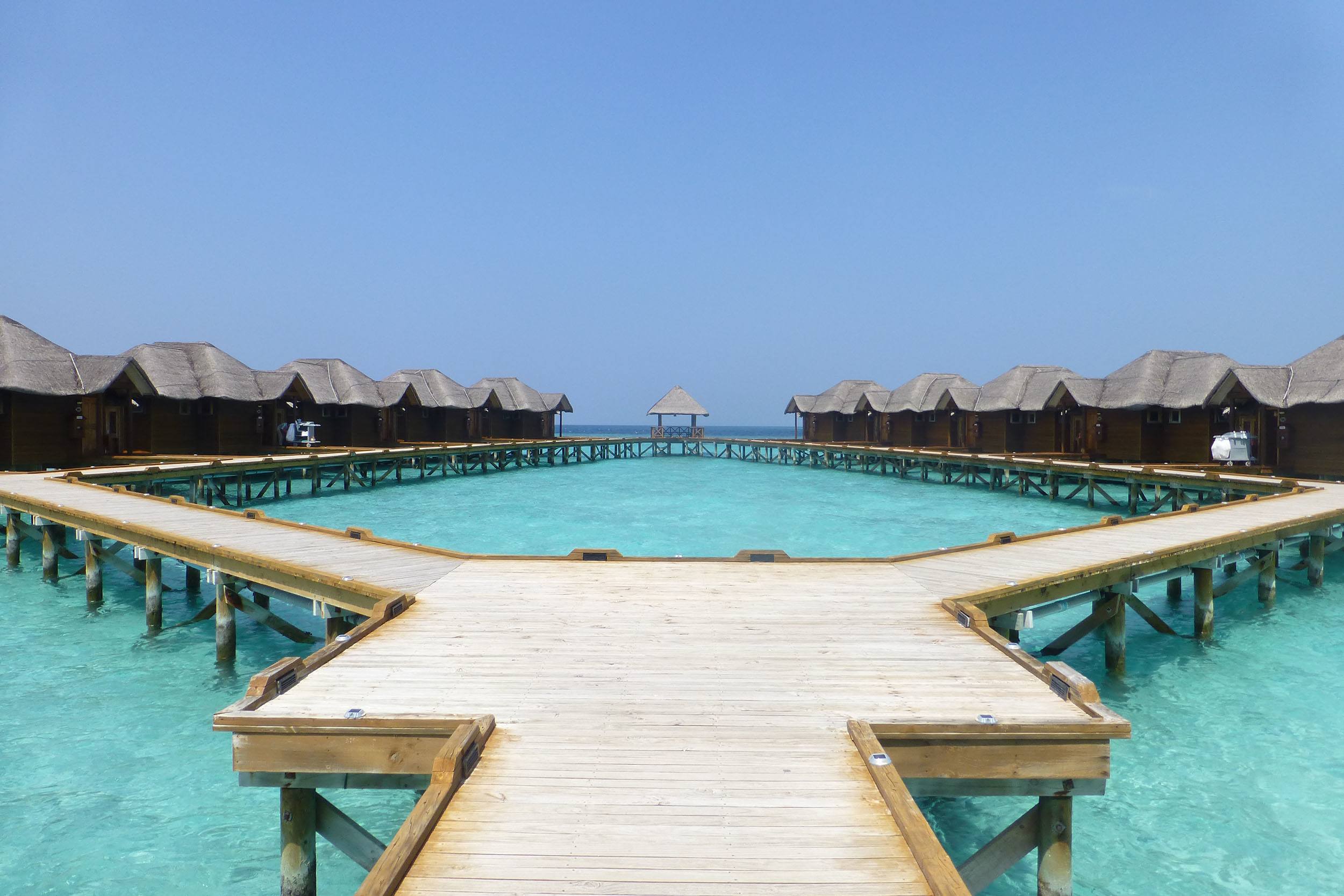
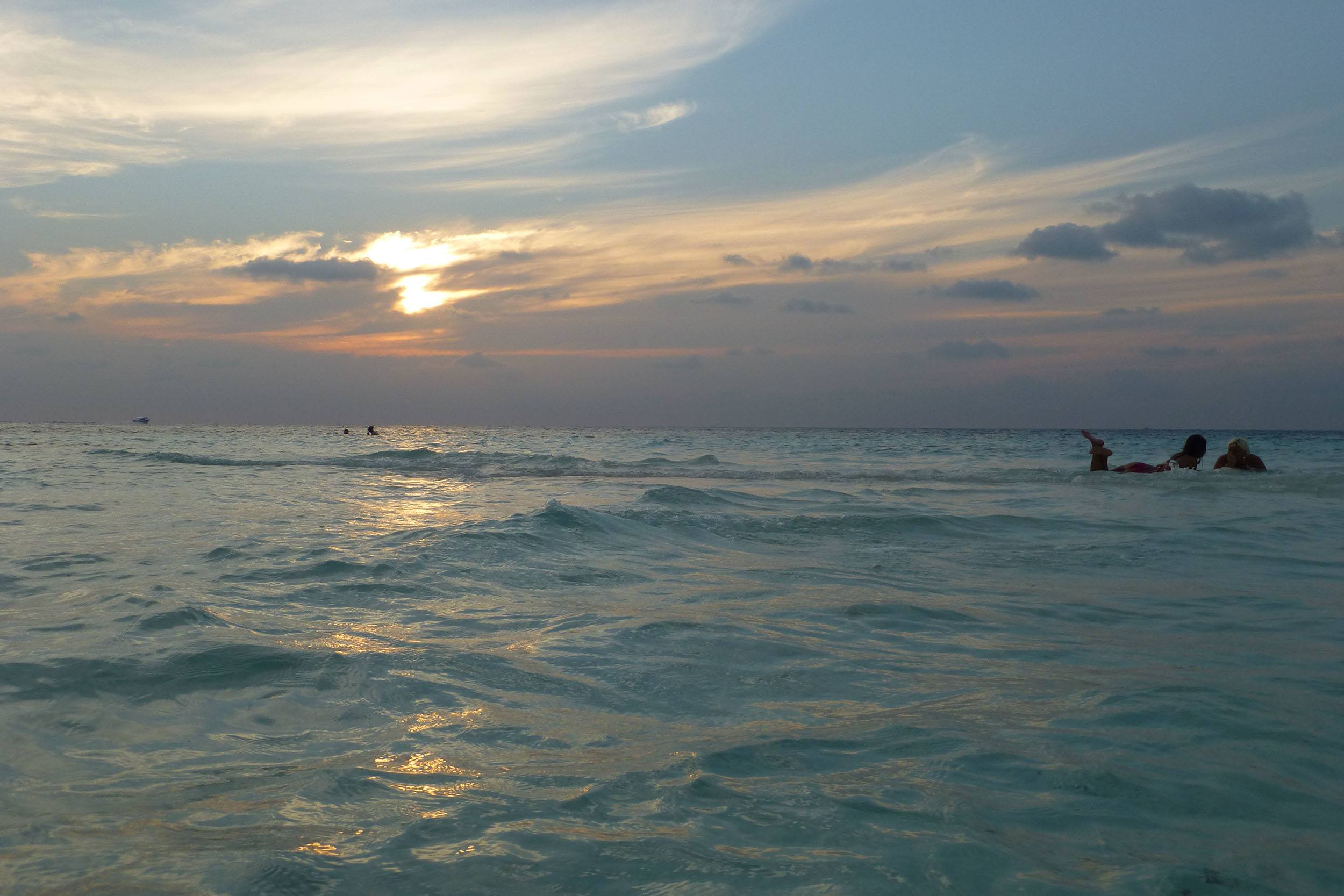

Slipping a Maldivian visit into casual conversation is empowering, regardless of the island on which you stay.
If given the opportunity, I would return to paradise in a heartbeat.

I don’t typically comment on posts, but as a long time reader I
thought I’d drop in and wish you all the best during these troubling times.
From all of us at Royal CBD, I hope you stay well with the COVID19 pandemic progressing at an alarming rate.
Justin Hamilton
Royal CBD
Hi Justin, Thank you for your kindness and for reaching out thoughtfully during such difficult times. I’m appreciative of your feedback and encouragement. I hope you, too, are well.
say thanks to a lot for your website it helps a whole lot.
Thanks for your kind and thoughtful words. I’m glad you found something of value in the article.